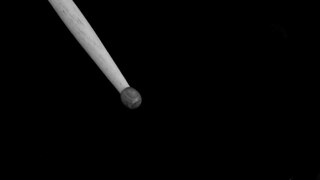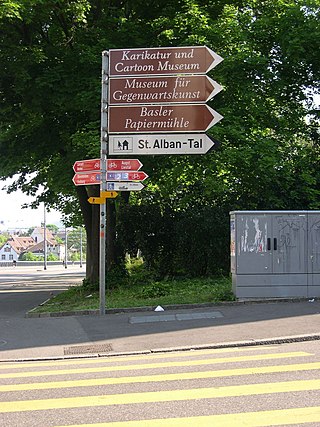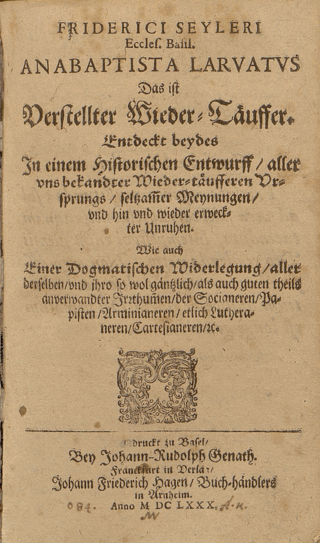Related Research Articles

The snare drum is a percussion instrument that produces a sharp staccato sound when the head is struck with a drum stick, due to the use of a series of stiff wires held under tension against the lower skin. Snare drums are often used in orchestras, concert bands, marching bands, parades, drumlines, drum corps, and more. It is one of the central pieces in a drum set, a collection of percussion instruments designed to be played by a seated drummer and used in many genres of music. Because basic rhythms are very easy to learn to play on a snare drum even for children, the instrument is also suitable for the music education for young children and a rhythm band.

A drum roll is a technique used by percussionists to produce a sustained sound for the duration of a written note.
All drum figures are based upon three fundamental beats, technically called roll, single stroke, and flam...Sustentation is accomplished upon wind instruments by blowing into the instrument; it is accomplished upon the violin and the allied instruments by drawing the bow across the string; it is accomplished upon the drum and allied percussion instruments by the roll.
THE SNARE DRUM ROLL.
The roll consists of an even reiteration of beats sufficiently rapid to prohibit rhythmic analysis. To produce an impression of sustentation, these beats must be absolutely even both in power and in sequence. Uneven beats in a roll destroy the impression of sustentation. Evenness is then the primary quality to strive for in roll; speed is the secondary quality to strive for.
There are two possible ways of producing an absolutely even sequence: (1) hand alternation of single stroke and (2) hand alternation of double strokes...The snare drum roll is produced by hand alternation of double strokes.
The "open roll" is produced by [initially] slow hand alternation. Two strokes in each hand alternately are produced by wrist movement and each beat should follow its predecessor in clock-like precision.

In rudimental drumming, a form of percussion music, a drum rudiment is one of a number of relatively small patterns which form the foundation for more extended and complex drumming patterns. The term "drum rudiment" is most closely associated with various forms of field drumming, where the snare drum plays a prominent role. In this context "rudiment" means not only "basic", but also fundamental. This tradition of drumming originates in military drumming and it is a central component of martial music.

The Basel drum is a two-headed rope-tension drum. It takes its name from its origin in Basel. This percussion instrument is best known from the Carnival of Basel, where it is played by more than 2000 drummers. They are called Tambouren in Swiss German or Tambourins in French. There is no typical number of players for marching-bands including this instrument. Anything between three and fifty drummers may be seen in such a formation.

Georg Wolfgang Franz Panzer was a German physician, botanist and entomologist. He produced a book on the insect fauna of Germany, illustrated with hand-coloured plates by Jacob Sturm which was produced in 109 parts over a 17 year period beginning in 1796.
Alex Duthart was a Scottish drummer. He is widely regarded as having revolutionised pipe band snare drum playing.
Sanford Augustus Moeller (1878–1960) was an American rudimental drummer, national champion, educator, and author. He was born in Albany, New York on February 16, 1878, and he began his music education by studying the piano.

The Basel museums encompass a series of museums in the city of Basel, Switzerland, and the neighboring region. They represent a broad spectrum of collections with a marked concentration in the fine arts and house numerous holdings of international significance. With at least three dozen institutions, not including the local history collections in the surrounding communities, the region offers an extraordinarily high density of museums compared to other metropolitan areas of similar size. They draw some one and a half million visitors annually.

Bergish is a collective name for a group of West Germanic dialects spoken in the Bergisches Land region east of the Rhine in western Germany.
The following is a timeline of the history of the city of Basel.

Andreas Urs Sommer is a German philosopher of Swiss origin. He specializes in the history of philosophy and its theory, ethics, philosophy of religion, and Skepticism. His historical studies center on the philosophy of Enlightenment and Nietzsche, but they also deal with Kant, Max Weber, Pierre Bayle, Jonathan Edwards, and others.
Ryan Alexander Bloom is an American drummer, author, and teacher. He is known for being a former member of the Colorado-based thrash metal band Havok, member of death metal band Bloodstrike, and the author of several books including Double Bass Drumming Explained, Thrash Metal DrummingEncyclopedia Rudimentia, and Rudimental Grand Tour

Friedrich Seyler, also spelled Friedrich Seiler, was a Swiss Reformed pastor and theologian from Basel, noted for his work Anabaptista Larvatus on Anabaptism.

Wolfgang Händler was a German mathematician, pioneering computer scientist and professor at Leibniz University Hannover and University of Erlangen–Nuremberg known for his work on automata theory, parallel computing, artificial intelligence, man-machine interfaces and computer graphics.

Claus Hessler, also spelled Claus Heßler, is a German drummer, author, and teacher. He is a clinician who specializes in Open-handed drumming and rudimental drumming, especially Basel Drumming and Moeller method.
H. C. Hart was an American drum major in the 71st New York Infantry during the American Civil War and an influential fife and drum manual author.
Alfons Grieder was a Swiss rudimental drummer who spread awareness of the Basel Drumming style in America during the mid to late 20th century through his traveling, teaching, and publications.
Carl Christoph Friedrich Bernoulli was a Swiss art dealer and interior designer from the Bernoulli family of scholars.
Edward B. Straight was an American drummer, founding member of the National Association of Rudimental Drummers, and author of several instructional drum books in the early days of drum kit playing.
The art collection of Carl Sachs, a Jewish entrepreneur who lived with his wife Margarethe in a villa in what was then Kleinburgstraße in Breslau, before 1939 he emigrated to Switzerland with his wife to escape Nazi persecution, included numerous paintings, watercolors and graphics.
References
- ↑ "Fritz Berger (2)". Discogs.
- ↑ “Tambours de Bâle.” Lebendige Traditionen. Département fédéral de l’intérior – Of ce fedéral de la culture (March 18, 2016).
- ↑ Berger, Fritz. Das Basler Trommeln : nebst vollständigem Lehrgang und einer Sammlung aller Basler Trommelmärsche. Basel: Birkhäser, 1928.
- ↑ Berger, Fritz. Das Basler Trommeln, Werden und Wesen. Trommel Verlag, c. 1936.
- ↑ "Strictly Technique - Swiss Rudiments".
- 1 2 Beck, John H. Encyclopedia of Percussion. Routledge, 2013.
- ↑ "Dr. Fritz Berger". Robin Engelman.
- 1 2 Dean, Matt. The Drum: A History. Scarecrow, 2011.
- 1 2 Bloom, Ryan Alexander. Encyclopedia Rudimentia. New York: Hudson Music, 2019.
- ↑ "Members list" (PDF). companyoffifeanddrum.org. Retrieved 2019-12-30.
- ↑ Chandler, Eric Alan, "A History of Rudimental Drumming in America From the Revolutionary War to the Present." (1990). LSU Historical Dissertations and Theses. 4901.
- 1 2 Blades, James. Percussion Instruments and Their History. Bold Strummer, 1992.
- ↑ Berger, Fritz. Instructor for Basle Drumming.Basel: Trommel Verlag, 1964.
- ↑ Berger, Fritz. Trommelmärsche. Vols 1-3. Basel: Trommel Verlag, 1959-1965.
- ↑ "International Association of Traditional Drummers - History". iatdrummers.com.